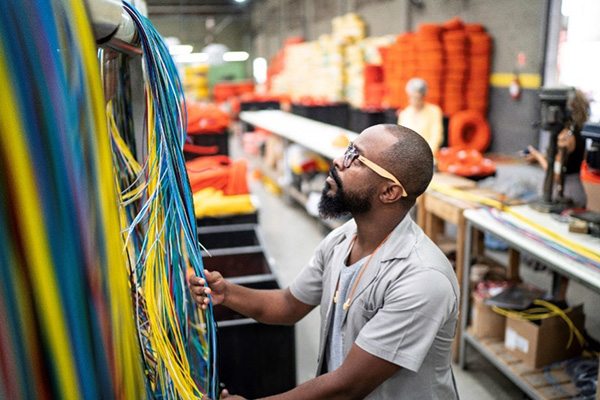PwC analysis highlights improved confidence, growth in industrial manufacturing deal activity and an increase in domestic deals through 2024.
The first half of the year was exciting for industrial manufacturing M&A activity as we’ve seen a noticeable increase in larger deals and a rise in M&A value compared to the same period last year.
Our Industrial manufacturing: US Deals 2024 midyear outlook dug into the trends fueling this uptick, discovering not only improved executive confidence but also profitability growth. Despite a lower level of deal volume in late 2023 and early 2024, the potential of easing monetary policies and a clearer policy direction following upcoming elections are set to boost deal activity in late 2024 and into 2025.
Industrial manufacturing companies are exhibiting a more powerful conviction in profit trajectories and overall business health. The focus on profitability, management of input costs, digital readiness, and the pursuit of synergistic acquisitions are key strategies for these firms. The trend towards “smart” factories, increased automation, and business model evolution, such as manufacturing-as-a-service, are driving efficiency and margin improvements. This may motivate them to not only address strategic gaps through midmarket acquisitions and strategic bolt-on deals, but also drive them to actively plan and execute divestitures. Those engaging in strategic analysis and preparatory divestiture efforts should be well-positioned to leverage opportunities in 2024 and into 2025.
Even with the increased confidence, we expect deal activity to be slow in the short term for two key reasons: Uncertainty surrounding the debt markets and interest rates, as well as the upcoming elections and the potential impact on regulatory policies. Companies are hesitant to engage in significant M&A transactions until there is more clarity regarding these market conditions and potential policy changes from elected officials.
Companies are tapping into the power of artificial intelligence (AI) to better enhance their operational efficiencies and maintain a strategic advantage against core competitors. The focus on AI will only continue to grow as business leaders see its potential to reimagine operations. Key use cases already in practice in the industry today include project management, resource allocation optimization, and safety standards improvement.
Executives also remain laser-focused on profitability. Companies are navigating through high inflation and interest rates, alongside elevated labor and wages. As we get a better understanding of potential rate cuts and future policies, these challenges have the potential to transform into opportunities and spur increased M&A activity.

When navigating macroeconomic uncertainties, it’s important for companies to take a step back and conduct thorough portfolio reviews, strategic analyses, and preparatory divestiture efforts to better position themselves to grasp opportunities.
This can empower companies to prioritize profitability and effectively manage input costs, while also focusing on digital readiness and potential synergy from possible acquisitions. Flexibility in deals structures is also an important piece to the puzzle to better anticipate regulatory changes and geopolitical shifts that could impact supply chains and distribution markets.
Companies are becoming better equipped to deal with the challenges in today’s M&A market and are feeling more confident in considering game-changing deals. This increased level of confidence combined with steadier market conditions will likely boost M&A activity later this year and into the new year.
The biggest piece of advice for those looking to stay competitive is to spend time doing portfolio reviews – to assess both strategic gaps and opportunities to divest non-core assets. This can enable companies to make smart decisions on a timely basis, positioning them for success in a competitive M&A market.

About the Author:
Michelle Ritchie is PwC’s Global Industrial Manufacturing and Automotive Deals Leader. With 20+ years of transaction experience, she advises clients on acquisition and divestiture activities, specializing in aerospace, defense, medical device, and technology sectors. Michelle’s passion lies in working with clients to achieve their strategic vision and finding the most direct path to success.
Scott Ellyson, CEO of East West Manufacturing, brings decades of global manufacturing and supply chain leadership to the conversation. In this episode, he shares practical insights on scaling operations, navigating complexity, and building resilient manufacturing networks in an increasingly connected world.